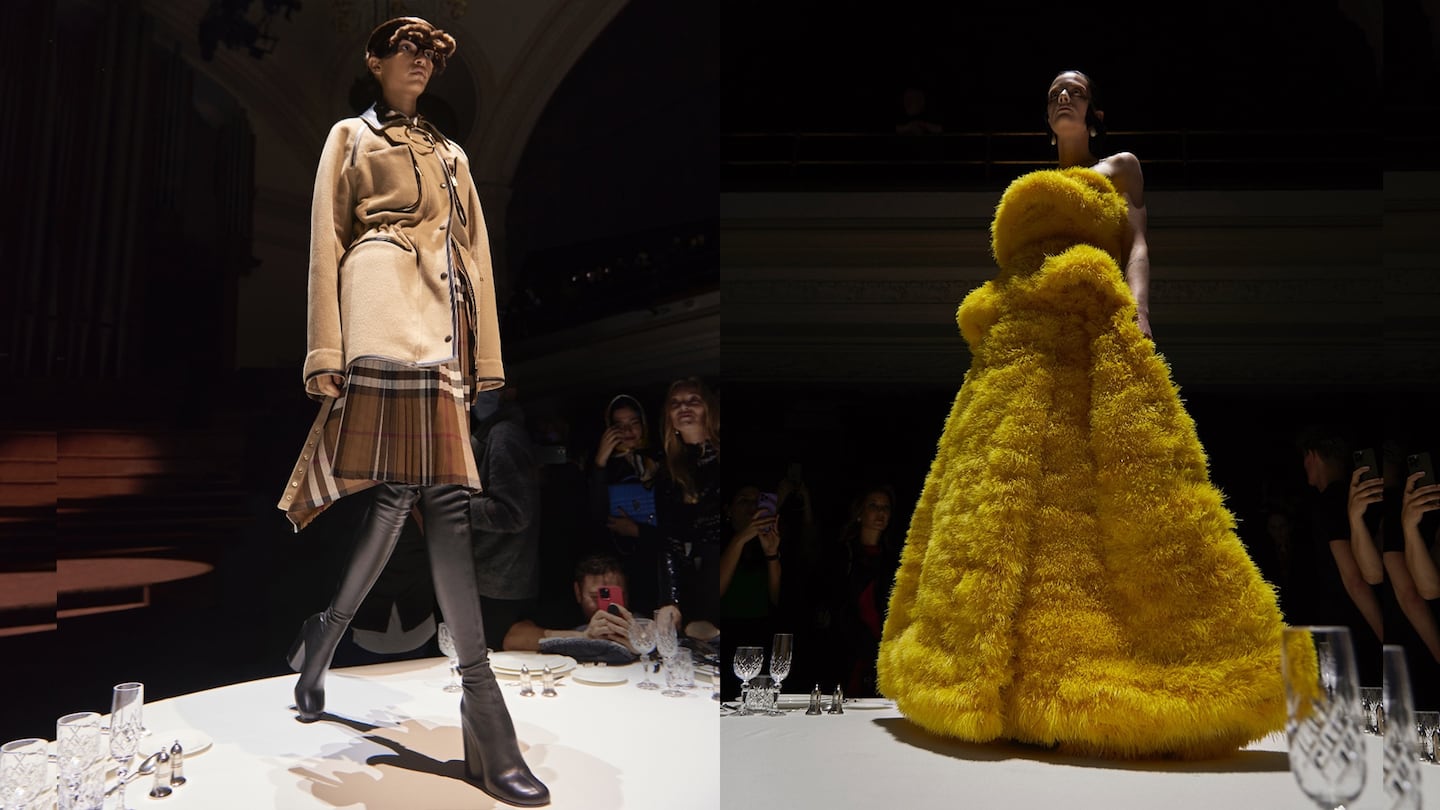
The Business of Fashion
Agenda-setting intelligence, analysis and advice for the global fashion community.

Agenda-setting intelligence, analysis and advice for the global fashion community.

A New Direction at Burberry?
When CEO Marco Gobbetti left Burberry last autumn, the British brand’s years-long plan to move upmarket (becoming a sort of British Gucci) remained incomplete. Gobbetti had stabilised the business by pulling out of discount-prone wholesalers and boosted investments in the key handbags category, while creative director Riccardo Tisci provided a sportier, more modern image.
But while the shift to retail solidified the business, top line growth has continued to disappoint. The brand has been losing market share to Kering and LVMH for years, and since the pandemic that gap has widened: for 2021′s holiday quarter, Burberry’s comparable sales were off 3 percent from pre-pandemic levels, while LVMH’s fashion division jumped 51 percent.
When Burberry reports its annual results Wednesday, investors will be looking for an update on the brand’s efforts to catch up while also navigating fresh challenges including China’s coronavirus lockdowns, Russia’s invasion of Ukraine, inflation and market turbulence in the US and Europe.
ADVERTISEMENT
They’ll also look for hints on how the strategy could evolve from chairman Gerry Murphy and new CEO Jonathan Akeroyd (even if having just arrived at the company, the former Versace chief is unlikely to present in-depth plans before the autumn).
The Bottom Line: Luxury, direct-to-consumer, and fashion-conscious young shoppers are still where the money’s at in fashion. The brand is unlikely to abandon its move upmarket, but investors are keen to know how and when managers hope to make it take off.
Richemont’s Hard Luxury Flex
Swiss luxury group Richemont will release its annual results Friday. Growth won’t be a problem, as iconic jewellery brands like Cartier and Van Cleef & Arpels, and fine watchmakers like Vacheron Constantin have been scooping up surging luxury demand since the pandemic.
But progress has been slow on spinning off or selling the troubled e-tailing division Yoox Net-a-Porter, which is expected to report an operating loss of as much as €300 million.
Richemont said last November it was in advanced talks to bring on Farfetch as a partner to help turn around YNAP (also potentially spinning it off), but details on the plan remain scant.
The group’s much smaller fashion unit is also struggling, despite bringing in high-level business executives from LVMH and OTB, and investing in creative overhauls at Chloé and Alaïa.
The Bottom Line: Richemont’s sales are booming thanks to its core watch and jewellery brands, but the market would like to see Johann Rupert taking a more “up or out” approach to the rest of the group’s portfolio.
ADVERTISEMENT
Editor’s Note: This story was updated Monday, May 16 at 9:54 a.m BST. A previous version of The Week Ahead discussed Kering’s investor day, mistakenly stating it would take place May 20th. Kering’s investor day is expected to take place mid-June. BoF regrets the error.
The Week Ahead wants to hear from you! Send tips, suggestions, complaints and compliments to brian.baskin@businessoffashion.com.
Join BoF Professional to get access to the exclusive insight and analysis that keeps you ahead of the competition. Subscribe to BoF Professional here.
The Swiss watch sector’s slide appears to be more pronounced than the wider luxury slowdown, but industry insiders and analysts urge perspective.
The LVMH-linked firm is betting its $545 million stake in the Italian shoemaker will yield the double-digit returns private equity typically seeks.
The Coach owner’s results will provide another opportunity to stick up for its acquisition of rival Capri. And the Met Gala will do its best to ignore the TikTok ban and labour strife at Conde Nast.
The former CFDA president sat down with BoF founder and editor-in-chief Imran Amed to discuss his remarkable life and career and how big business has changed the fashion industry.